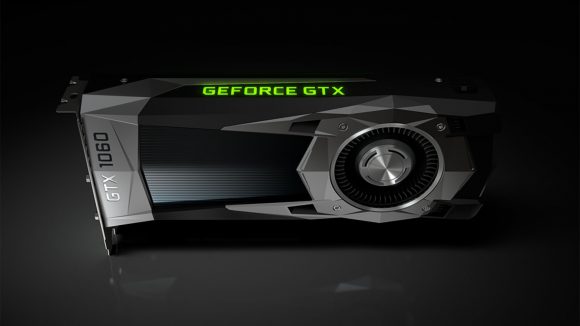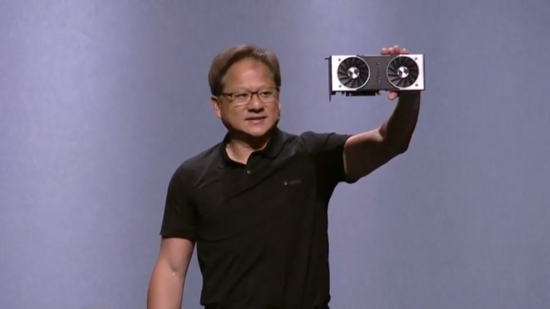The next-generation of mid-range Nvidia graphics cards won’t launch for at least another three to six months due to an overabundance of old Pascal stock. During Nvidia’s Q3 earnings call, CEO Jen-Hsun Huang told investors that there are currently enough mid-range GPUs sitting idle in the channel to fulfil customer demand for an entire quarter… if not two. And you can be damned sure Nvidia won’t replace Pascal-based cards with fresh mainstream Turing GPUs until that much ageing stock has all been sold off.
Nvidia has wrapped up its Q3 earnings call – which occurs one month later than most – during which the company announced year-on-year revenue was up 21%, and quarter-on-quarter was up 2%. However, the good news and healthy dividend increase didn’t do much to calm the stock market, which plummeted over 15% after the call.
That’s because Nvidia also announced it was suffering serious inventory woes all thanks to cryptocurrency miners. Back when putting your PC to work as a mining rig was still profitable, GPU manufacturers such as Nvidia couldn’t build enough graphics cards to meet the demand of both miners and gamers combined. Prices skyrocketed, profits ran high, and investors tried to manage expectations in case this whole business went away overnight.
And it did – which apparently took Nvidia, despite a year of almost everyone talking about it, by surprise.
“The crypto hangover has left the industry with excess inventory — excess channel inventory. It will take one or two quarters to work through it,” Huang says during the Q3 investors call. “This is an unexpected near-term setback and doesn’t change the fundamental dynamics of our company. The end of Moore’s Law has cleared a way for NVIDIA accelerated computing as a great path forward.“

With Nvidia confirming it has halted GTX 1060 silicon supply for the next three to six months, it won’t be inundating the market any further with fresh-faced Turing architecture-based mid-range cards for a long while. For the time being then Pascal will remain at the core of the entry-level and budget lineup, while Turing makes up the high-end with the RTX 2080 Ti, RTX 2080, and RTX 2070.
There have been multiple reports of Nvidia’s sales channel being inundated with cards since mid-year. Nvidia was reportedly handed 300,000 GPUs earlier in the year from an unnamed Taiwanese graphics card manufacturer, after the great mining boom of 2017/18 went up in smoke, leaving the company swimming in graphics silicon.
“We’re really not shipping into the mid-range segment of Pascal so that we give the channel an opportunity to sell through the product it has. And we would like to see channel inventory get normalized by the end of Q4, and then we’ll get back to doing our work.
“Between the unexpected, unanticipated slow decline of pricing in the channel, and even after the prices came down, it took a little longer than we expected for volume to kick up,” Huang continues. “And the other brand’s inventory in the marketplace, those factors kind of compounded and made it a lot worse than we expected.”

Nvidia has another thorn in its side besides excess stock: AMD. The company just yesterday launched its RX 590 graphics cards, intended solely to kick Nvidia’s GTX 1060 where the Turing architecture doesn’t shine. With Turing mid-range cards not expected to launch for quite some time, AMD has, quite adroitly, picked a fight it might be able to win with the ageing GTX 1060.
With an over-abundance of GTX 1060 stock, the next-generation mid-range GPUs will surely be on hold until Nvidia can sell through the Pascal silicon currently taking up space in warehouses the world over. With the mid-range competition heating up yet again, this could take longer than even Nvidia expect to achieve and potentially setting up a head-to-head with AMD Navi come the end of Q2 2019.
